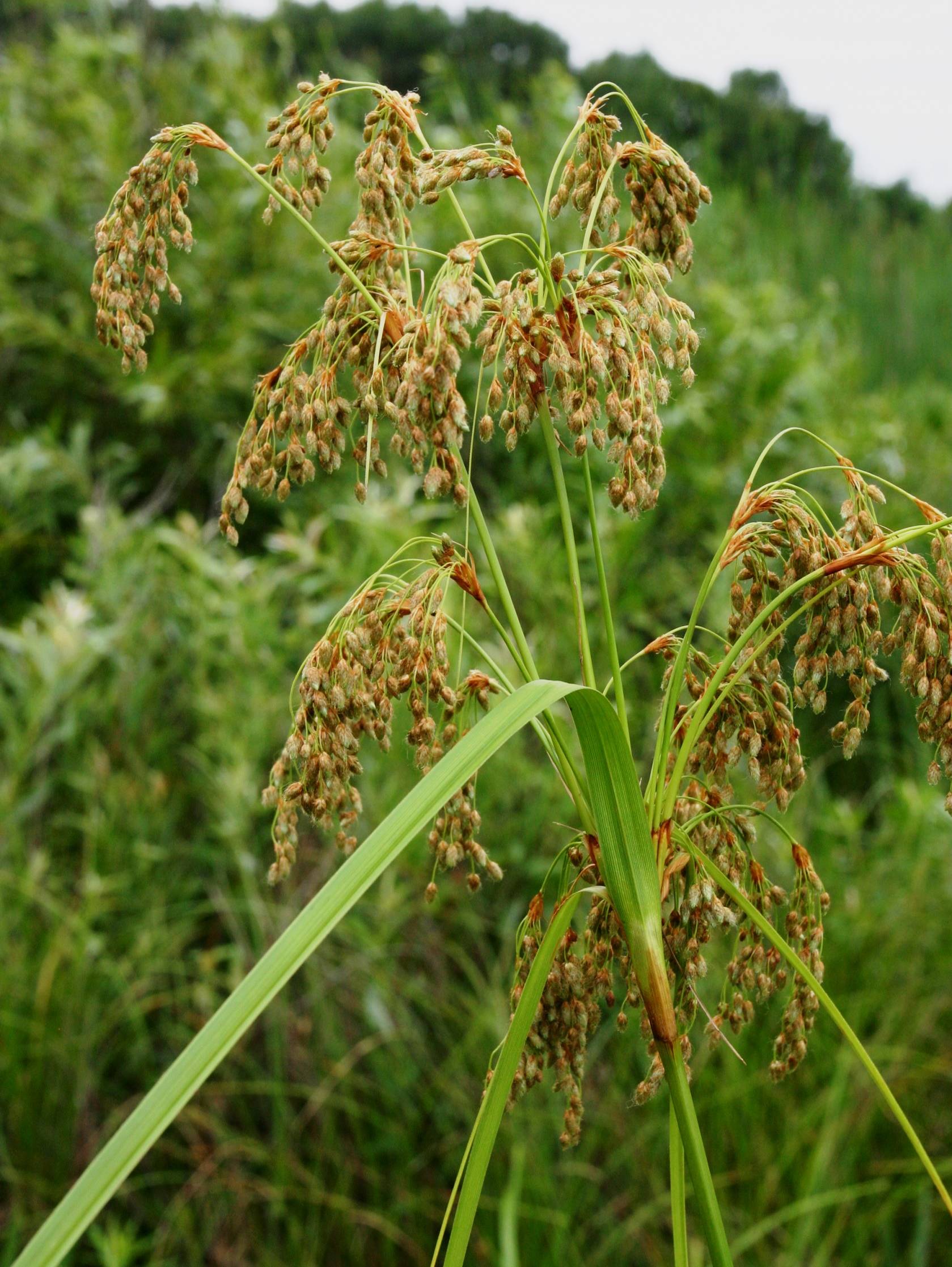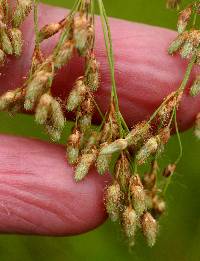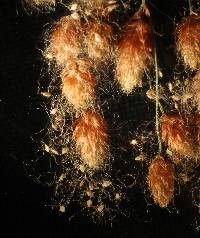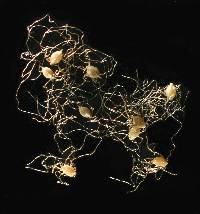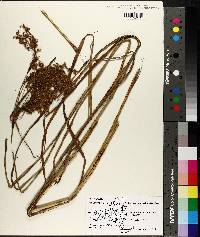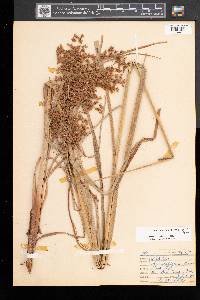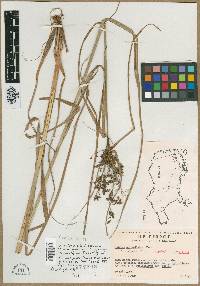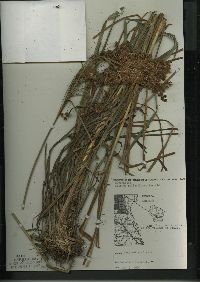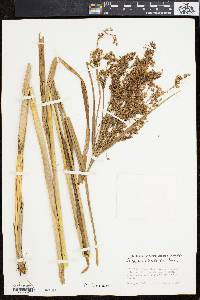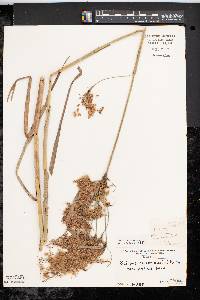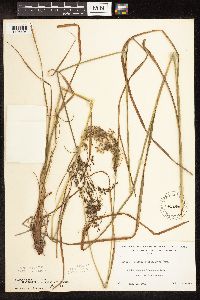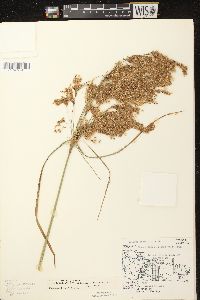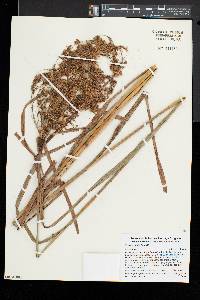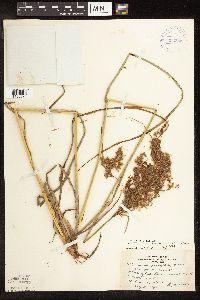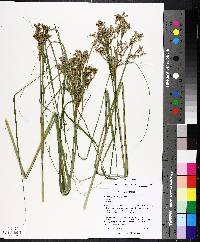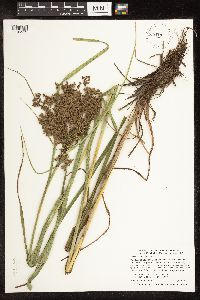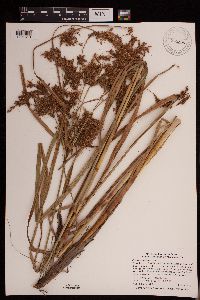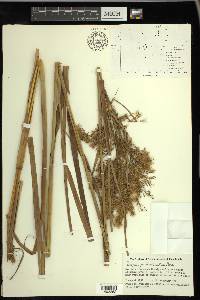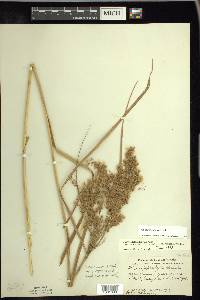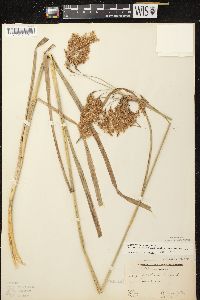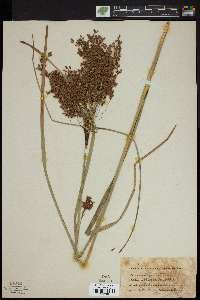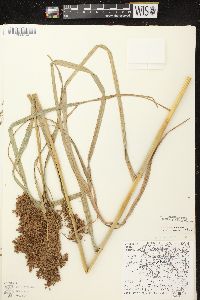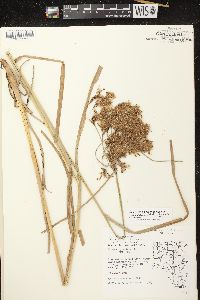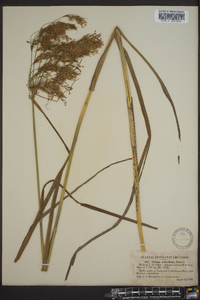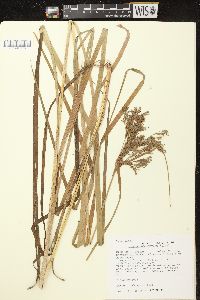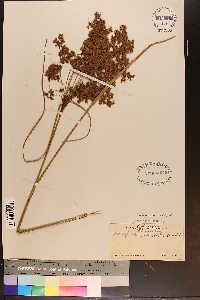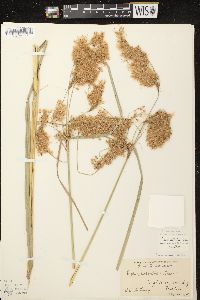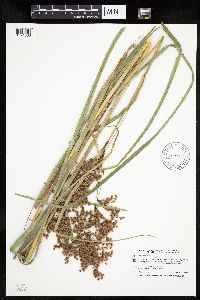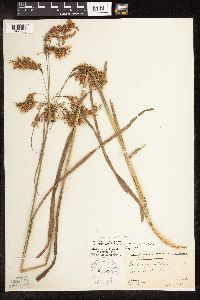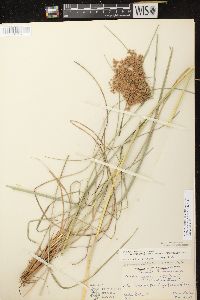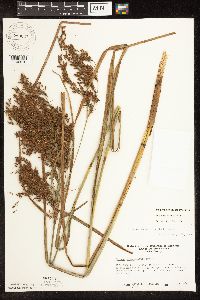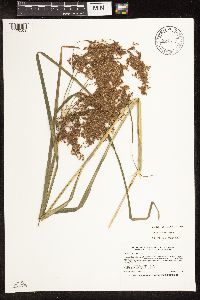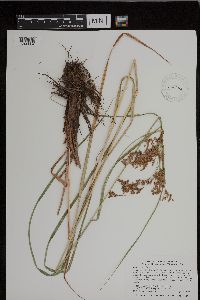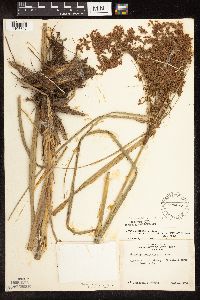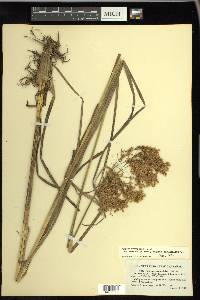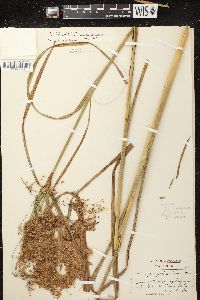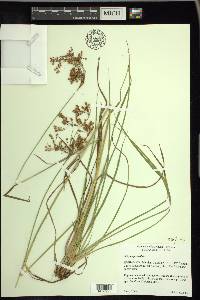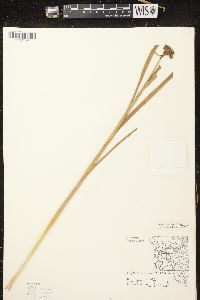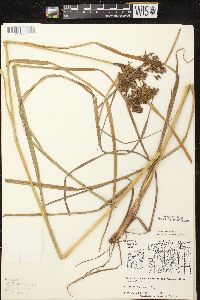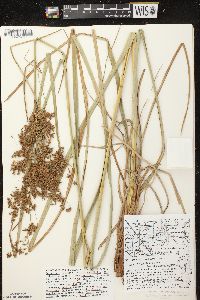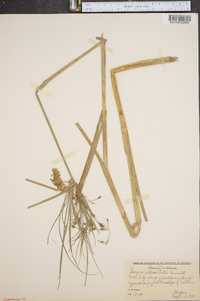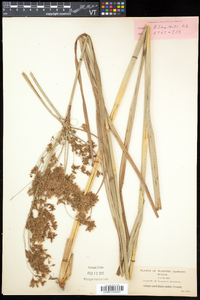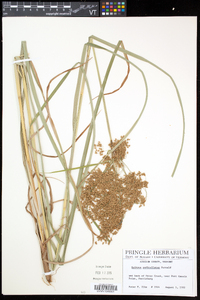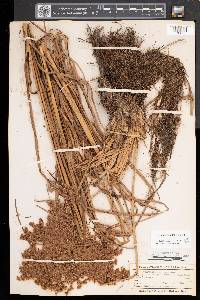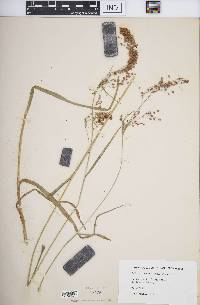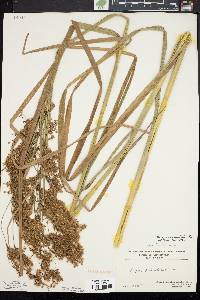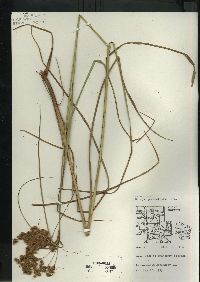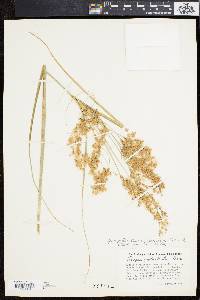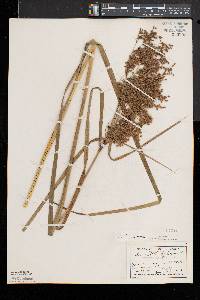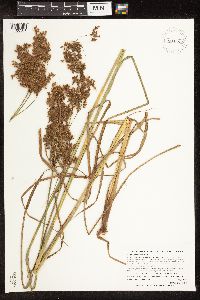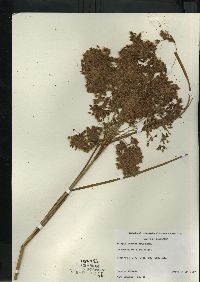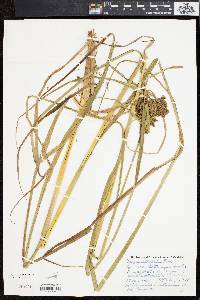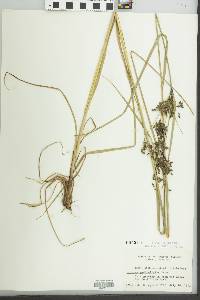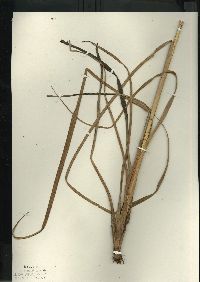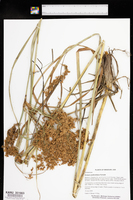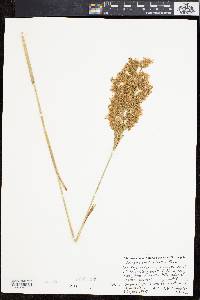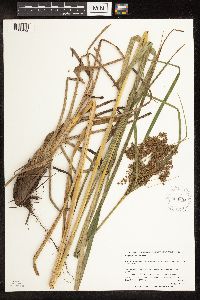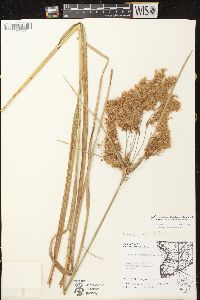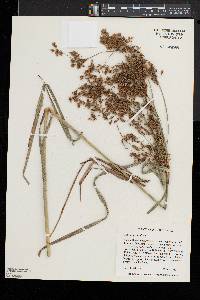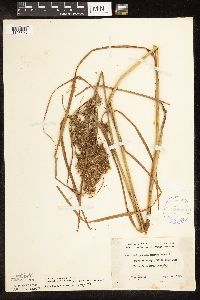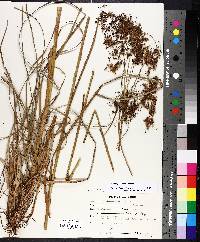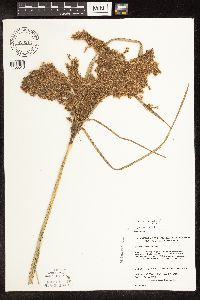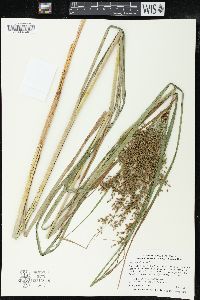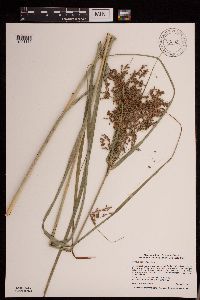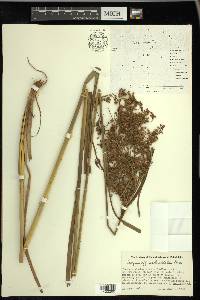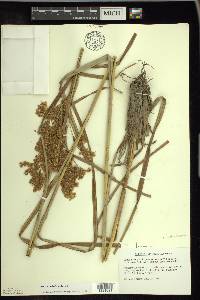
|
|
|
|
Family: Cyperaceae
Stalked Bulrush
[Scirpus pedicellatus f. viviparus F.G.Bernard] |
Plants aggregated in dense tussocks; rhizomes branching, short, tough, fibrous. Culms: fertile ones upright or nearly so; nodes without axillary bulblets. Leaves ca. 8 per culm; sheaths of proximal leaves green or brownish; proximal sheaths and blades with septa few to many, consipuous or inconspicuous; blades 42-77 cm × 5-9 mm. Inflorescences terminal; rays ascending, scabrous throughout or main branches smooth proximally, rays rarely with axillary bulblets; bases of involucral bracts green, brown, or blackish, not glutinous. Spikelets in open cymes, central spikelet of each cyme sessile, others usually pedicellate, spikelets ovoid, 3-9 × 2-3 mm; scales usually pale brown, black pigment absent (or sometimes a little beside distal midrib), oblong-elliptic, 1.4-1.8 mm, rounded or weakly mucronate, mucro (if present) to 0.1 mm. Flowers: perianth bristles persistent, 6, slender, contorted, much longer than achene, smooth, projecting beyond scales, mature inflorescence appearing woolly; styles 3-fid. Achenes whitish, elliptic or obovate in outline, plumply trigonous or plano-convex, 0.7-0.9 ´ 0.4-0.5 mm. 2n = 68. Fruiting summer (mid or late Jul). Usually in lowland marshes in stream valleys, edges of bogs, boggy meadows, and wet sandy shorelines; 0-500 m; N.B., N.S., Ont., Que.; Conn., Ill., Ind., Iowa, Maine, Mass., Mich., Minn., Mo., N.H., N.J., N.Y., Ohio, Pa., R.I., Vt., Wis. Scirpus pedicellatus often hybridizes with S. cyperinus and forms hybrid swarms.
Perennial herb with short, tough rhizomes, forming dense tussocks to 2 m tall Leaves: three-ranked, to eight per culm. Sheaths of lower leaves green or brownish. Blades 40 cm - 0.75 m long, 5 - 9 mm wide, keeled beneath. Inflorescence: a large, branched arrangement of spikelets, terminal, subtended by three leaf-like bracts. Bracts green, brownish, or blackish basally. Flowers: minute, subtended by a floral scale, lacking sepals and petals, bearing six persistent bristles. Bristles slender, contorted, much longer than achene, growing past the scales (giving the mature spikelets a woolly appearance). Stamens one to three, exserted. Pistil one. Style linear, three-cleft, base persistent. Fruit: a one-seeded achene, whitish, about 1 mm long and 0.5 mm wide, elliptic or reverse egg-shaped, plumply three-sided or flat on one side and convex on the other, minutely bumpy. Culm: to 2 m long, three-sided, solid. Spikelets: in open, ascending clusters, stalkless or stalked (central spikelet of each cluster always stalkless), 3 - 9 mm long, 2 - 3 mm wide, egg-shaped. Floral scales spirally arranged, pale brown, about 1.5 mm long, narrowly elliptic with a rounded apex that sometimes bears a tiny point. Similar species: No information at this time. Flowering: July to August Habitat and ecology: Rare in the Chicago Region, where it grows in wet ground. Occurence in the Chicago region: native Etymology: Scirpus comes from the Latin name for a bulrush. Pedicellatus means "borne on pedicels (stalks)." Author: The Morton Arboretum From Flora of Indiana (1940) by Charles C. Deam This so-called species is infrequent and is found throughout the state in habitats similar to those of Scirpus cyperinus. …… Indiana Coefficient of Conservatism: C = 7 Wetland Indicator Status: OBL |
This project was made possible in part by the Institute of Museum and Library Services [MG-70-19-0057-19].
Powered by Symbiota

